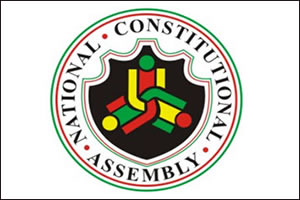Use, abuse of sick leave
they are sick or not feeling well, to execute their duties.
“A paid sick leave provision is intended to protect an employee’s income and status during the period of illness or injury.”
The Labour Act Chapter 28:01 Section 14, sick leave shall be granted to an employee who is prevented from attending his duties because he is ill or injured or undergoes medical treatment which was not occasioned by his failure to take reasonable precautions.
It says that during any one-year period of service of an employee, an employer shall, at the request of the employee supported by a certificate signed by a registered medical practitioner, grant up to 90 days’ sick leave on full pay.
If during any one-year period of service of an employee, the employee has used up the maximum period of sick leave on full pay, an employer shall, at the request of the employee supported by a certificate signed by a registered medical practitioner, grant a further period of up to 90 days’ sick leave on half pay.
This is in instances where, in the opinion of the registered medical practitioner signing the certificate, it is probable that the employee will be able to resume duty after the additional period of sick leave.
If during any one-year period of service, the period or aggregate periods of sick leave exceed 90 days’, sick leave on full pay or 180 days’ sick leave on full and half pay, the employer may terminate the employment of the employee concerned.
An employee who so wishes may be granted accrued vacation leave instead of sick leave on half pay or without pay. Section 14A (4) of the Act further states that an employee who becomes ill or is injured during a period of vacation leave may cancel his vacation leave and apply for sick leave. This is basically what the Act says regarding sick leave.
However, some employees are believed to be abusing this facility and most employers, do not even know how to fix such a “problem”.
Do you find that your employees are missing in action on a more frequent basis during month-end or every Monday?
Employees’ abuse of sick leave costs organisations and the economy dearly. Such abuse is the result of unethical behaviour on the part of employees, and sometimes medical practitioners, too.
A disturbing fact is that sick leave abuse not only occurs among lower-level workers, professional-level employees are also guilty of this practice.
Let me just take a look at what really influences employees to abuse sick leave.
Various studies conclude that company size affects employee absence. One study, for example, found an average absence level of 6,15 days per employee in companies with fewer than 50 employees, compared to eight days per employee in companies with 100 and more employees.
On the one hand, there is the level of satisfaction with the job environment, an attitude that is shaped by the match between an employee’s personal characteristics and the working climate of the organisation that also affects sick bay.
Personal lifestyle factors and circumstances at home have also been found to contribute to absence levels.
Studies indicate that harmful habits, such as smoking and alcohol abuse, account for as much as 25 percent of sick leave.
Likewise, dependent children at home also impact on absence. It has been established that the younger the children, the higher the absence rate.
For this reason, female employees are generally absent more often than males, but female absences have been shown to reduce as the age of dependent children increases.
Alcoholics usually capitalise on this by seeing a doctor first before relaxing and enjoying beer at “spring view bar”, purporting to be sick.
The person will drink beer like someone on bail and tomorrow reports for work with lots of hangover, publicly displaying pain-killing tablets and some drugs, for you to really sympathise with him.
A last and very important factor is a general slackness about sickness absence management within the organisational culture.
Various studies indicate that generous sick leave provision result in high absence levels. For many employees, sick leave represents additional leave, which must be utilised before year end.
To be continued
Taurai Musakaruka is Human Resources Practitioner. Feedback e-mail to musakaruka@gmail. comortauraimusakaruka
@yahoo.com







Comments